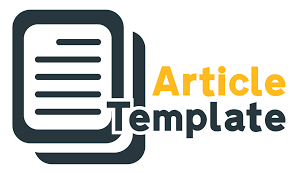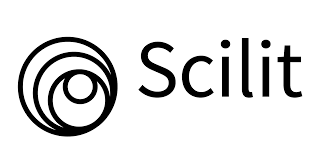VISUAL MYTHOLOGY REYOG PONOROGO IN ARTIFICIAL INTELEGENT
DOI:
https://doi.org/10.38043/jids.v8i2.5280Keywords:
Reyog Ponorogo, myth visualization, artificial intelligence, Picture Theory, visual communicationAbstract
Reyog Ponorogo is an artwork with a rich history and folklore, as well as a particular visual narrative that is worth studying through the lens of visual data studies. Reyog performers offer significant meanings via the visuals of their performance as well as the ideology of Ponoragan Javanese culture. The purpose of this project is to convert oral myths into visual signals in Reyog performances using visual data. Using W.J.T. Mitchell's "Picture Theory" method, this research investigates the complicated interplay between pictures and text, introducing the idea of "imagetext" as one manifestation of this interaction. The method used is a prompt-based descriptive approach in which keywords are entered to instruct the artificial intelligence (AI) system to translate the command into a visual form, as well as a re-representation technique based on "picture words" in an effort to create images with narratives rooted in Reyog Ponorogo mythology. This study included two AI systems: Leonardo AI and Midjourney. The study found that the AI system is not entirely capable of understanding local regional languages, leading to plot discrepancies between pictures in the same story series. Nonetheless, this technique adds a new dimension to visual communication technology, particularly in the delivery of visual messages using AI.
Downloads
References
Abduljabbar, R., Dia, H., Liyanage, S., & Bagloee, S. A. (2019). Applications of artificial intelligence in transport: An overview. Sustainability, 11(1), 189.
Al-Attabi, Q. (2024). Translation and cultural appropriation. In Routledge eBooks. https://doi.org/10.4324/9781003470724-4
Aydemir, D. (2023). Revitalizing Turkish Mythological Elements through Artificial Intelligence Applications in Graphic Design: A Case Study on Midjourney. International Scientific and Vocational Studies Journal, 7(2), 187205. https://doi.org/10.47897/bilmes.1400144
Azza, N. (2023). What is Leonardo AI: Everything You Need to Know. https://www.digitbin.com/what-is-leonardo-ai/
Bharadwaj, A. R., Chandra, S. S., Nair, D. S., Hatim, A. R., & Ravikumar, A. (2020). Automated mythological scene recognition using machine learning and graphs. 2020 International Conference on Artificial Intelligence and Signal Processing (AISP), 15. https://doi.org/10.1109/AISP48273.2020.9073474
BroutonLab. (2020). Leonardo.AI: Transforming Visual Experiences with AI-Powered Editing. BroutonLab. https://broutonlab.com/blog/leonardo-ai-enliven-your-photo-and-help-make-it-better
Domingues, D., Cardoso, G., Gustavo, R., Lazzarotto, B., Passos, M. dos, & Reategui, E. B. (2004). Imyth. ACM SIGGRAPH 2004 Posters, 10. https://doi.org/10.1145/1186415.1186427
From Pixels to Paintings: The Rise of Midjourney AI Art. (2023). https://learnopencv.com/rise-of-midjourney-ai-art/
Han, A., & Cai, Z. (2023). Design implications of generative AI systems for visual storytelling for young learners. Proceedings of the 22nd Annual ACM Interaction Design and Children Conference. https://api.semanticscholar.org/CorpusID:259149297
Hays, B. (n.d.). iAiAEi NEW WRDL.
Islam, A. B. M. R. (2022). Machine learning in computer vision. In Applications of Machine Learning and Artificial Intelligence in Education (pp. 4872). IGI Global.
Jin, D. Y. (2024). AI in cultural production in the Korean cultural industries. Telematics and Informatics Reports, 13, 100113. https://doi.org/https://doi.org/10.1016/j.teler.2023.100113
Khan, A. A., Laghari, A. A., & Awan, S. A. (2021). Machine learning in computer vision: a review. EAI Endorsed Transactions on Scalable Information Systems, 8(32), e4e4.
Kimura, R., & Nakajima, T. (2023). A design approach for building a digital platform to augment human abilities based on a more-than-human perspective. Multimedia Tools and Applications, 156.
Latikka, R., Bergdahl, J., Savela, N., & Oksanen, A. (2023). AI as an Artist? A Two-Wave Survey Study on Attitudes Toward Using Artificial Intelligence in Art. Poetics, 101, 101839. https://doi.org/https://doi.org/10.1016/j.poetic.2023.101839
Lawlor, J. (1984). Artificial Intelligence and Expert Systems.
Leonardo.Ai. (2022). https://leonardo.ai/
Maher, M. Lou, & Tadimalla, S. Y. (2024). Increasing Diversity in Lifelong AI Education: Workshop report. Proceedings of the AAAI Symposium Series, 3(1), 493500. https://doi.org/10.1609/aaaiss.v3i1.31263
Mahmood, R., Wang, G., Kalra, M., & Yan, P. (2023). Fact-Checking of AI-Generated reports. https://arxiv.org/abs/2307.14634
Majumder, D. D. (1988). A unified approach to artificial intelligence, pattern recognition, image processing and computer vision in fifth-generation computer systems. Information Sciences, 45(3), 391431.
Malamed, C. (2009). Visual language for designers: Principles for creating graphics that people understand. Rockport Publishers.
Midjourney. (2023). https://www.midjourney.com/home/
Miller, J. H. (2023). Artforum. https://www.artforum.com/columns/w-j-t-mitchells-picture-theory-203088/
Mosley, A. J., Biernat, M., & Adams, G. (2023). Sociocultural engagement in a colorblind racism framework moderates perceptions of cultural appropriation. Journal of Experimental Social Psychology, 108, 104487. https://doi.org/https://doi.org/10.1016/j.jesp.2023.104487
MURNI, S. J. S. R. (n.d.). KISAH CINTA DEWI SONGGOLANGIT SEBAGAI IDE PENCIPTAAN KARYA SENI RAJUT.
Nof, S. Y. (2009). Automation: What it means to us around the world. Springer Handbook of Automation, 1352.
Pemkab Ponorogo. (1993). Pedoman Dasar Kesenian Reyog Ponorogo dalam Pentas Budaya Bangsa. Pemkab Ponorogo.
Pryor, J. J. (2023). What is Midjourney? Everything You Wanted to Know About the AI Art Generator. Medium. https://jjpryor.medium.com/what-is-midjourney-ai-art-generator-c59fcdbd5bea
Rifky, S., Kharisma, L. P. I., Afendi, H. A. R., zulfa, I., Napitupulu, S., Ulina, M., Lestari, W. S., Maysanjaya, I. M. D., Kelvin, K., & Sinaga, F. M. (2024). Artificial Intelligence: Teori dan Penerapan AI di Berbagai Bidang. PT. Sonpedia Publishing Indonesia.
Simatupang, L. (2013). Pergelaran: Sebuah Mozaik Penelitian Seni Budaya. In (No Title).
Sophie Mayer. (2008). View of Picture Theory: on Photographic intimacy in Nicole Brossard and Anne Carson | Studies in Canadian Literature. In Studies in Canadian Literature (Vol. 33). https://journals.lib.unb.ca/index.php/SCL/article/view/11211/11950
Stone, P., Brooks, R., Brynjolfsson, E., Calo, R., Etzioni, O., Hager, G., Hirschberg, J., Kalyanakrishnan, S., Kamar, E., & Kraus, S. (2022). Artificial intelligence and life in 2030: the one hundred year study on artificial intelligence. ArXiv Preprint ArXiv:2211.06318.
Vinyals, O., Toshev, A., Bengio, S., & Erhan, D. (2015). Show and tell: A neural image caption generator. Proceedings of the IEEE Conference on Computer Vision and Pattern Recognition, 31563164.
Zanoletti, M. (2013). Translating an Imagetext: Verbal and Visual Self-Representation in Brett Whiteleys Interior, Lavender Bay (1976). TTR, 26(1), 195220. https://doi.org/https://doi.org/10.7202/1036955ar
Zhang, R., Chao, M., Cho, J., & Morris, M. (2023). Appropriate or Appropriative? Diversity Ideologies, Judgment Factors, and Condemnation of Cultural Borrowing. https://doi.org/10.31234/osf.io/qpzsh
Zhao, Z.-Y., & Song, J.-S. (2024). A Study on the Generation of Visual Images for Mythological Legends Using AI Generated Content(AIGC): Focusing on the Chinese Mythology Collection Classic of Mountains and Seas with ChatGPT and Midjourney. Korea Soc Pub Des. https://api.semanticscholar.org/CorpusID:270803553
Downloads
Published
How to Cite
Issue
Section
License
Copyright (c) 2024 Oki Cahyo Nugroho, Deny Wahyu Tricana, Pinaryo, Niken Lestarini

This work is licensed under a Creative Commons Attribution-NonCommercial 4.0 International License.


















